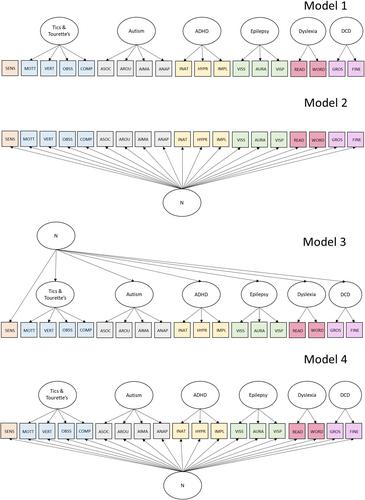The concept of neurodiversity draws upon scientific research, and lessons from practice and lived experience to suggest new ways of thinking about neurodevelopmental conditions. Among the formative observations are that characteristics associated with neurodevelopmental conditions are part of a “broader phenotype” of variation across the whole population, and that there appear to be “transdiagnostic” similarities as well as differences in these characteristics. These observations raise important questions that have implications for understanding diversity in neurodevelopmental conditions and in neurocognitive phenotypes across the whole population.
The present work examines broader phenotypes using seven widely used self-report assessments of traits associated with autism, ADHD, dyslexia, Developmental Coordination Disorder/dyspraxia, tic disorders/Tourette's, cortical hyperexcitability associated with subclinical epilepsy, and sensory sensitivities. A representative sample of 995 adults (aged 17–77) in the UK completed self-report measures of neurodiversity, wellbeing, generalized anxiety, and depression, and cognitive abilities (nonverbal intelligence and executive functioning).
We used confirmatory factor analysis to test whether variation and covariation was better characterized (1) by traditional diagnostic labels, or (2) transdiagnostically according to similarities in functions, behaviours, or phenomena. Results indicated that neurodiversity characteristics were best explained using a bifactor model with one general “N” factor and four condition-specific factors.
This was the largest examination to date of the factor structure of broader phenotypes relevant to neurodevelopmental conditions. It provides critical benchmark data, and a framework approach for asking systematic questions about the structure of neurocognitive diversities seen in the whole population and in people with one or more diagnoses.


